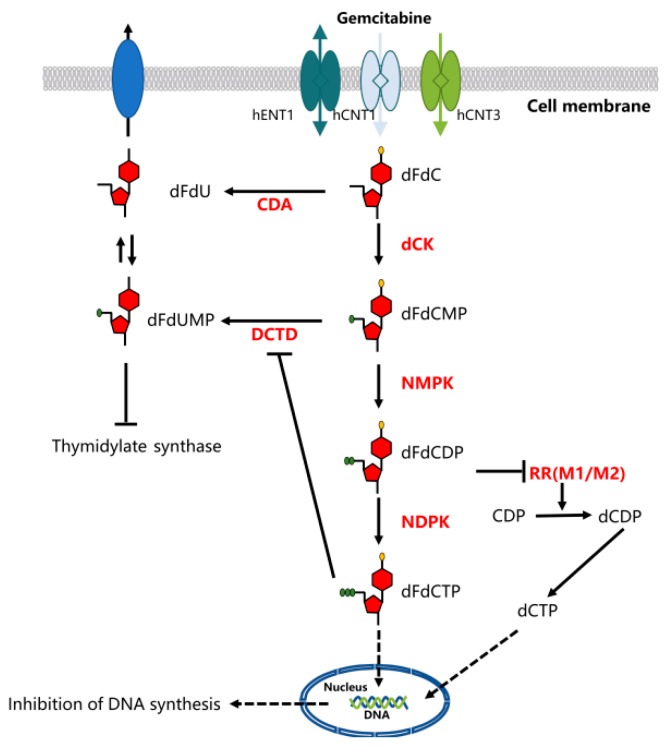Figure 2.
Mechanism of action of gemcitabine. Gemcitabine activation and transport are governed by various enzymes. Nucleoside transporters include the human concentrative nucleoside transporters (hCNTs) and human equilibrative nucleoside transporters (hENTs). After gemcitabine enters the cell membrane, deoxycytidine kinase (dCK) is the first phosphorylated rate-limiting enzyme and phosphorylates gemcitabine to gemcitabine monophosphate (dFdCMP). Subsequently, complex intracellular converts to nucleotide gemcitabine diphosphate (dFdCDP) and triphosphate (dFdCTP). Gemcitabine metabolite dFdCTP inhibits ribonucleoside reductase (RR), an enzyme that regulates DNA biosynthesis, by controlling the formation of nucleoside triphosphates (NTPs). RR transforms CDP into dCDP, and its inhibitory effect leads to the decreased concentration of competitive dCTP pool cells required for DNA synthesis, thus promoting the binding of dFdCTP to DNA.

